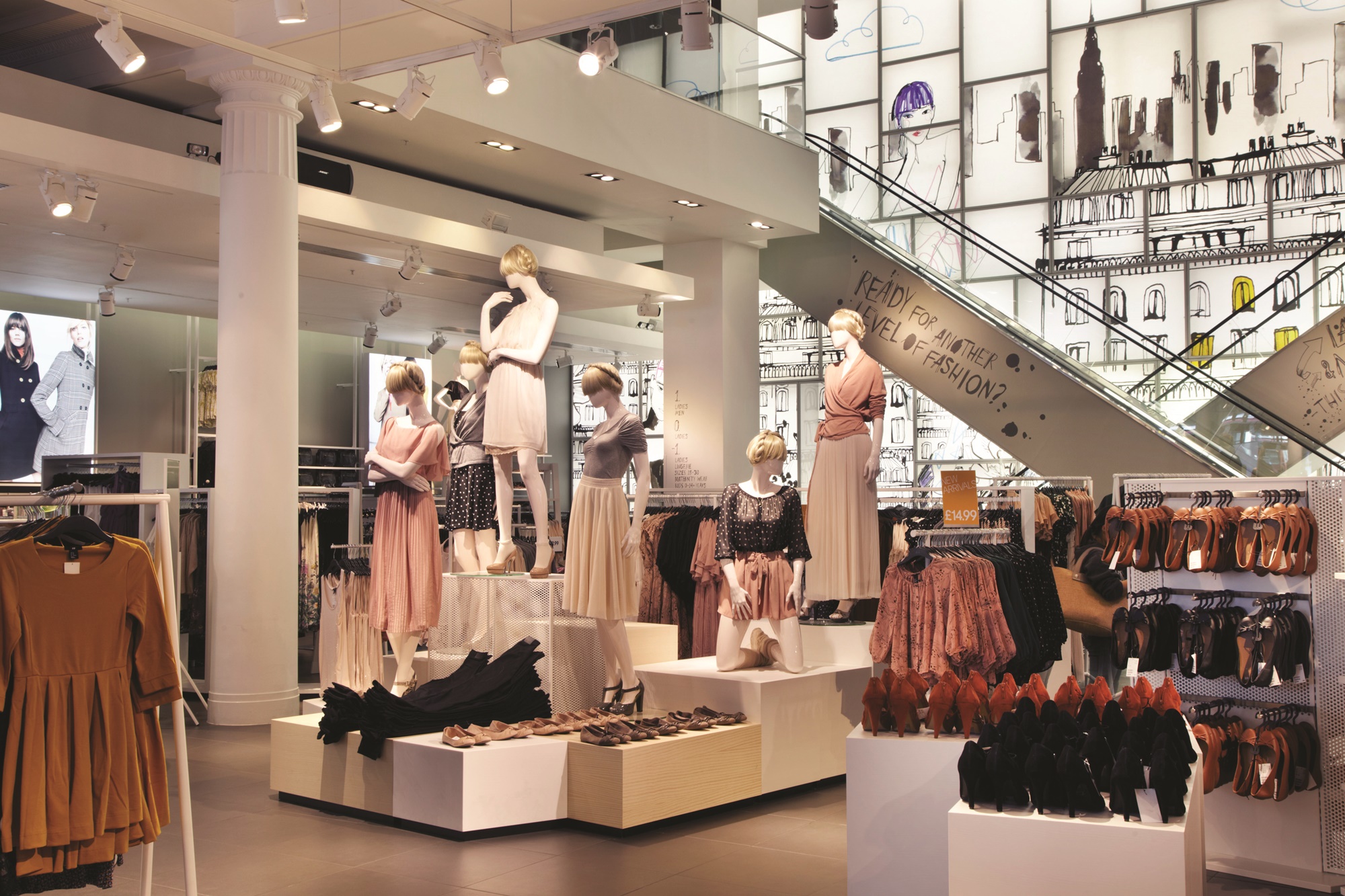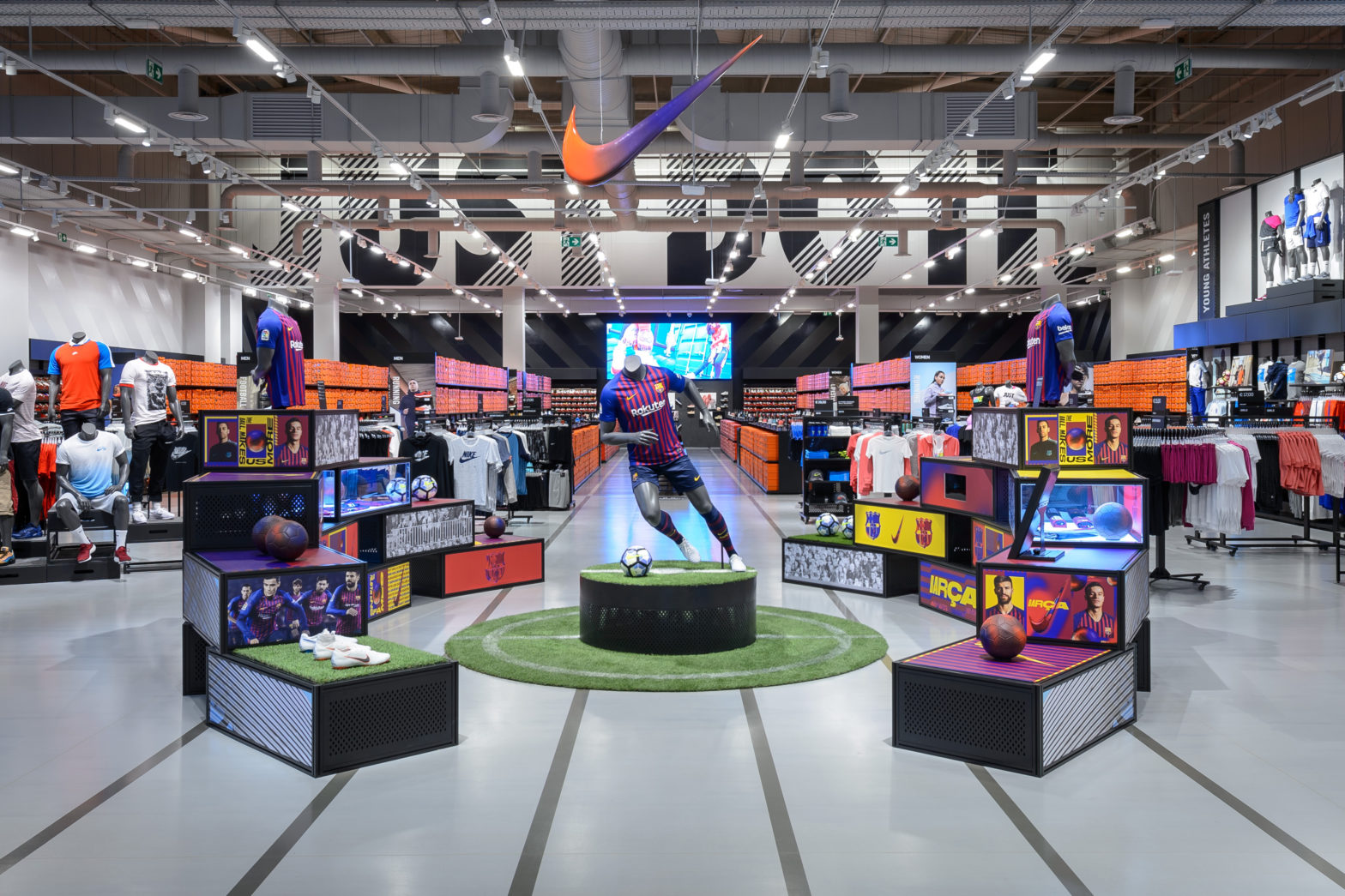Visual Merchandising is the delicate balance between science and art. It involves designing signage, store layout, interior design, lighting design, shelving design, product arrangement, and display to attract the attention of customers, reinforce the brand image, and ultimately increase sales.
This marketing form includes creativity, color, light, display screens, props, technology, and other elements to create a multi-sensory experience or sensory brand for its customers.
The main purpose of Visual Merchandising
- Attract potential customers effectively, helping them understand the brand identity correctly from the beginning.
- Maximize the number of customers coming to the store.
- Increase the brand’s influence through social media.
- Build a loyal customer base, increase sales effectively.
The important aspect of Visual Merchandising
Every aspect of the store design can contribute to the visual display of merchandise. Below are the key aspects to consider when determining the product placement in your retail stores:
Signage
Visual Merchandising includes everything, from storefront displays and product displays to signage inside the store. Providing a visually appealing experience is the first step in connecting shoppers to your store’s target audience. By understanding and utilizing design techniques, you can easily transform your store into an aesthetic experience that your customers may love.
Signage is the characteristic feature of a store, it is personal, original, and continuously recognized by customers. It is a simple visual sales tool that helps customers easily find what they need. If you want your visual merchandise to look sophisticated, all of these things must look consistent throughout the store’s operation and business activities.
Displaying glass doors
Due to different positions and factors, landscape design also plays an important role and is a trend in creating harmony between space and the surrounding environment. It is especially important to focus on displaying glass doors because they are the focal point, helping to maintain and create good connections with optimal customers.
Each glass door design is a great tool for retailers to tell a story that your customers care about. The connections don’t have to be direct or obvious, but the products should complement each other, and each contributes to the overall theme.
Floor plan:
Creating consistency among all display, decoration, and design methods will help the store become more professional and approachable to customers. Depending on the customer’s movement direction, the floor plan also relies on the thoughts and ideas of retailers in guiding and arranging furniture products in the most sophisticated way. These options can be loop diagrams, corner floor plans, geometric diagrams, and free-flow diagrams. To have the complete process, stores need to have clear product areas.
Store layout
The overall layout of the store is an important factor in visually displaying the store’s merchandise. Retail store layout is not just about displaying merchandise, but also helps significantly increase sales. The choice of appropriate store layout depends on the store’s scale and the types of products on display. You should also consider the target customers for those products.
The position of the shelves
Displaying with shelves encourages customers to buy more. Helps customers find what they want. Using appropriate spacing helps highlight certain display areas or products, reducing clutter and increasing openness
Product placement:
If planned accurately, arranging items strategically has a significant impact on customer purchasing. Customer satisfaction in this marketing depends on balance, which can be symmetrical or asymmetrical. Symmetry uses design elements with the same color, material, weight, while asymmetry uses contrasting, opposing elements. Additionally, contrast also creates focal points for your items or store.
Product Weight:
Products should be presented in an organized manner to avoid overcrowding the display. Utilizing the “reference points” effectively in classifying and arranging goods into groups is quite important, helping customers easily observe and quickly find the products they need.
Combining the 5 senses
a retail store that truly emphasizes creating a multi-sensory experience, optimizing the customer’s experience process. The main challenge for a retail store is to make the space friendly and influence the customer’s purchasing decision during their time at the store.
Color and light
Color is one of the most important visual selling factors. It attracts attention, expresses meaning, creates the most suitable environment, and influences purchasing behavior. In addition, light used throughout the store and on display shelves is considered crucial in creating customers’ first impression of the products.
Your brand identity is leveraged, helping to increase sales and provide customers with valid reasons to come back, while also giving your business a competitive advantage. That is why store layout always plays a crucial role in the customer experience, effective visual merchandising can help products sell themselves.
Are you a business and in need of a reputable interior design and showroom construction company? Contact immediately at hotline 0969.993.037 for more advice.









